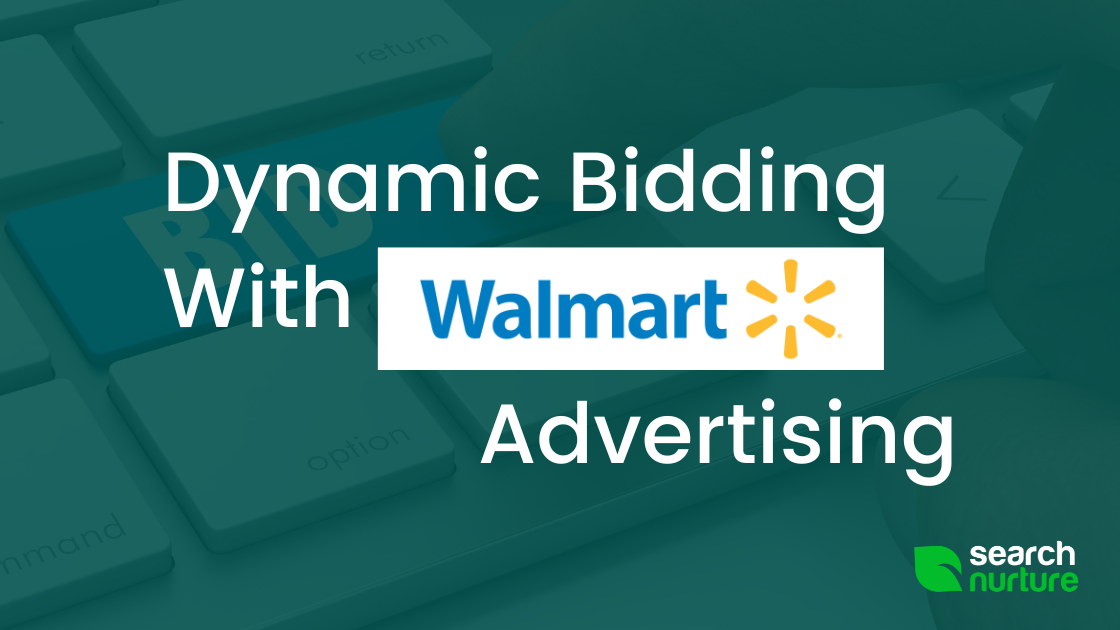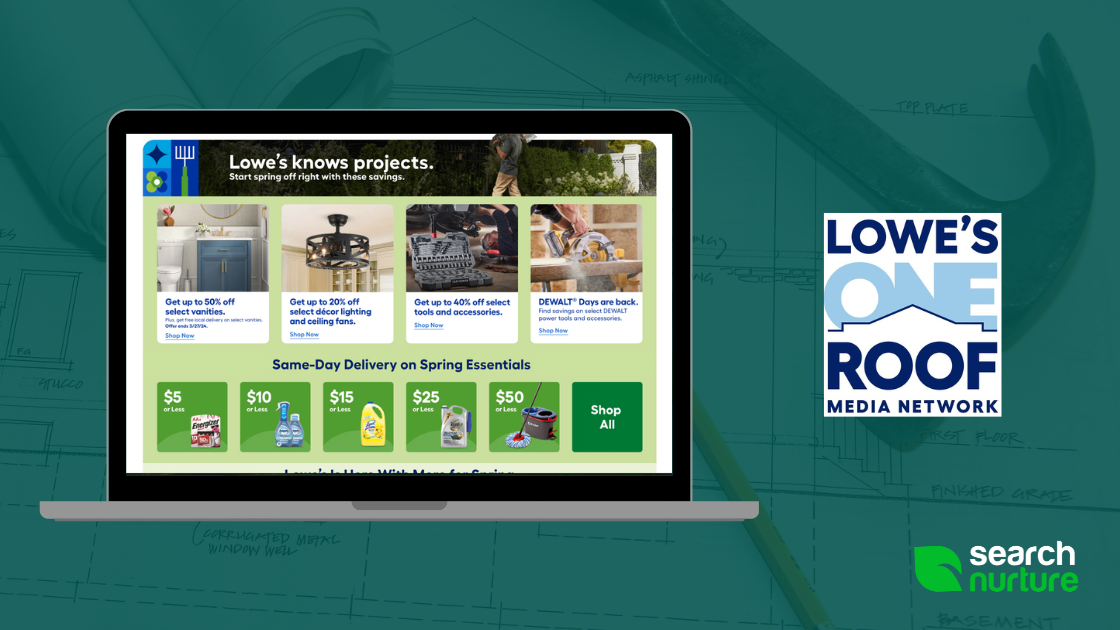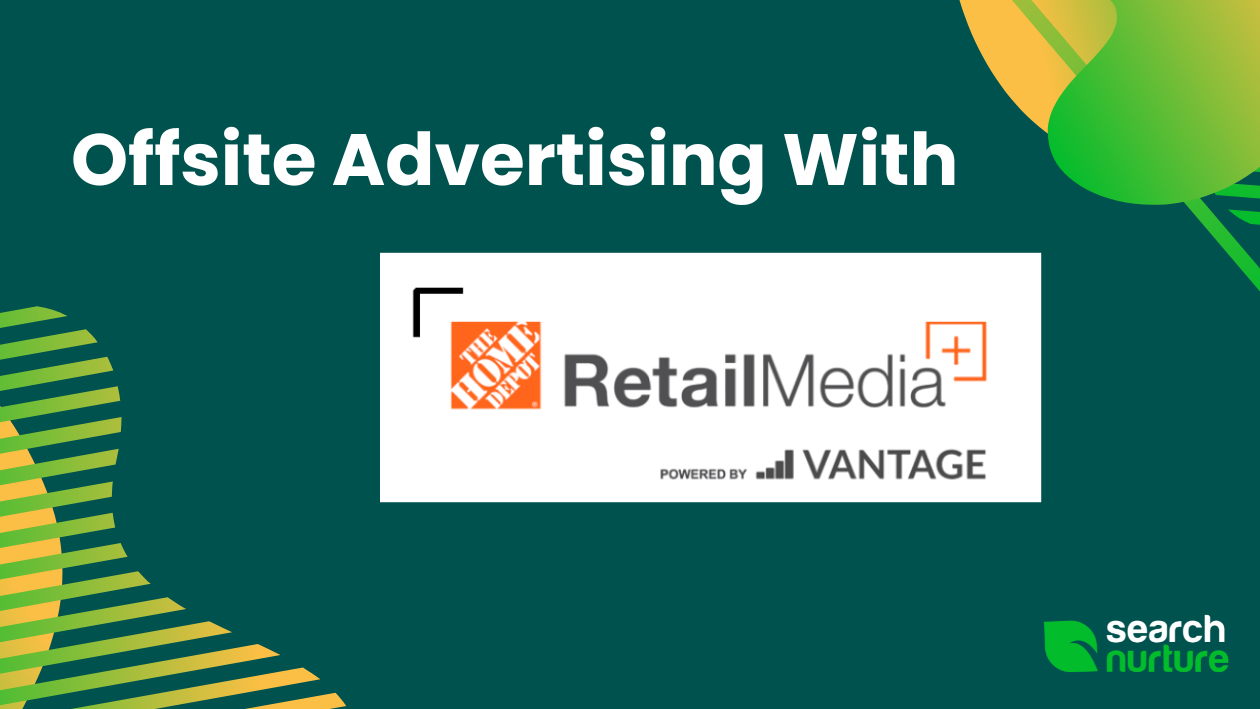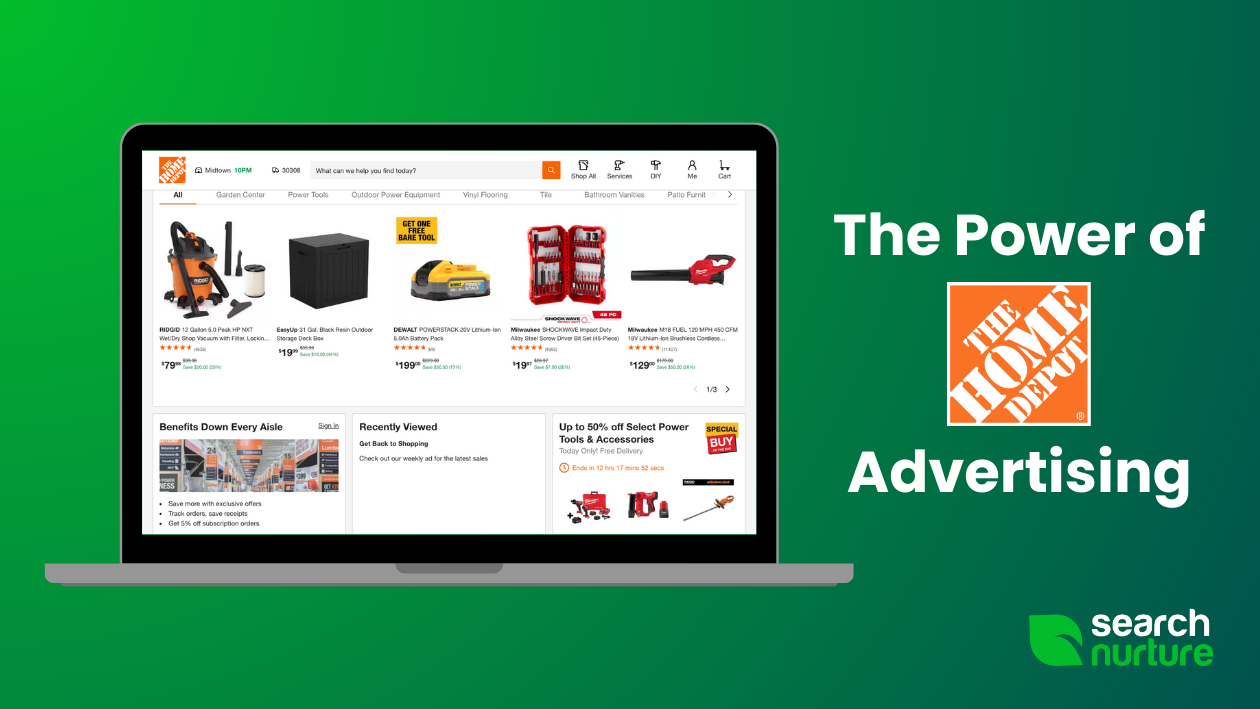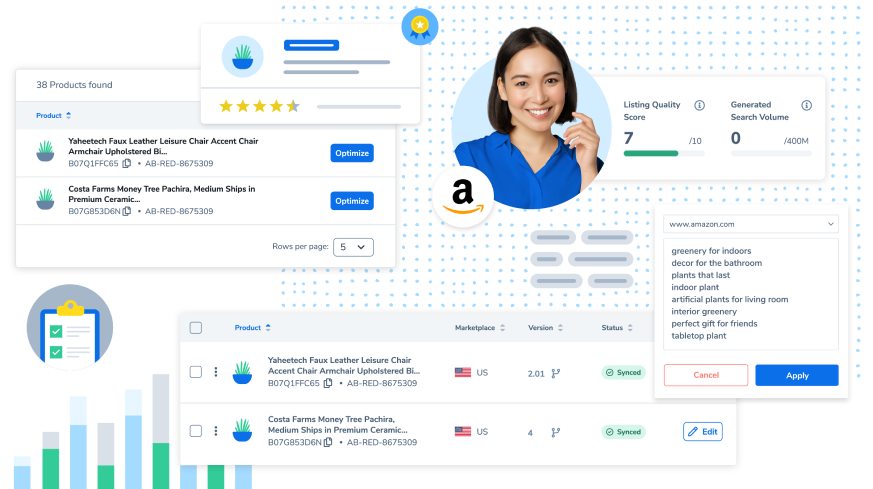If you’re reading this, you’ve likely heard about Lowe’s advertising platform, the One Roof Media Network. Maybe you’ve already started advertising there. It’s pretty easy to use—you upload your products and photos and bid on ad placements. Then, you sit back and wait for the sales to roll in.
But…they don’t. That’s because you haven’t flushed out your Lowe’s advertising strategy.
Lowe’s One Roof Media Network may be easy to use, but it’s not a set-it-and-forget-it tool. To set your products up for success, you need to think like an advertising expert. And brands have had great success advertising with Lowes. After all, Lowes.com alone has more than 136 million visits per month.
In this guide, I’m sharing some insights from our team of advertising experts on how to be successful with Lowe’s advertising. We’ll talk about how to determine your advertising goals and which products you should sell on the platform. We’ll also cover how to set up your ad bidding strategy for maximum conversion.
By the end of this post, you’ll be well on your way to advertising success with Lowe’s.
Determining Your Lowe’s Advertising Goals
Everyone with a product to sell has a clear goal: sell enough products to see a positive return on investment. Yes, this is our goal, too. But we also need to remember that advertising is beneficial for multiple reasons.
Every successful advertising campaign is founded on well-defined objectives. Whether aiming to drive sales, enhance brand visibility, or optimize ad expenditure, your goals shape your strategies.
Lowe’s advertising platform divides its campaign objectives into four main areas: return on ad spend (ROAS), return on investment (ROI), conversion volume, and reach.
Return on Ad Spend (ROAS)
If your main goal is revenue growth, the campaign metric you want to focus on is your ROAS. ROAS measures the overall return generated from your advertising investment, answering the question, “For every dollar spent on advertising, how much revenue are we bringing in?”
You can calculate ROAS by dividing all of the revenue a campaign drove by the total cost invested. A good goal is to get your ROAS above 1. The higher the number, the more efficient your campaign is performing.
Return on Investment (ROI)
This metric is similar to ROAS, but it focuses on a holistic view of how efficiently your entire account is performing. Your ROI is your net profit generated by your ads relative to the cost of your ad. You can calculate the ROI of your advertising campaign by dividing total account revenue by total cost.
Your goal is to raise your ROI metric to above 1. Like ROAS, the higher the number, the more efficient and successful you are overall.
But remember that if your campaign goal is to reach as many viewers as possible, you may not see a positive ROI at first. Brand visibility campaigns drive results in the long run, but they’re typically not lucrative in the short term.
Conversion Volume
If your goal is to bring in as many orders as possible, conversion is the metric you want to focus on. Conversion volume is the number of orders your advertising efforts brought in.
Pay close attention to the cost per conversion metric—this tells you how much every order costs by dividing the total cost of a campaign by the orders. Depending on the product type, the lower the amount, the less it costs to advertise and sell this item.
Reach
We usually think that with every retail strategy, the only metrics that count are the ones with dollar signs attached. But remember that not every customer browsing Lowes.com will make a purchase. But, they may see your ad during their research and remember it for a later purchase.
This is where the reach metric comes in. Reach is simply the amount of time your ads are shown. On most platforms, you can see this by the number of impressions your campaign drives.
Reach guarantees that your product or brand is placed in front of the most relevant audiences, even if they don’t purchase. It guarantees that your product or brand stays top of mind with the audiences that are looking for products like yours.
How to Select the Best Products to Advertise on Lowe’s
Now that you’ve set your goal, it is time to select your products. You might have a vast selection of great products in your store. That’s great! But, now is a time to play favorites—you don’t want to advertise all your available products off the bat.
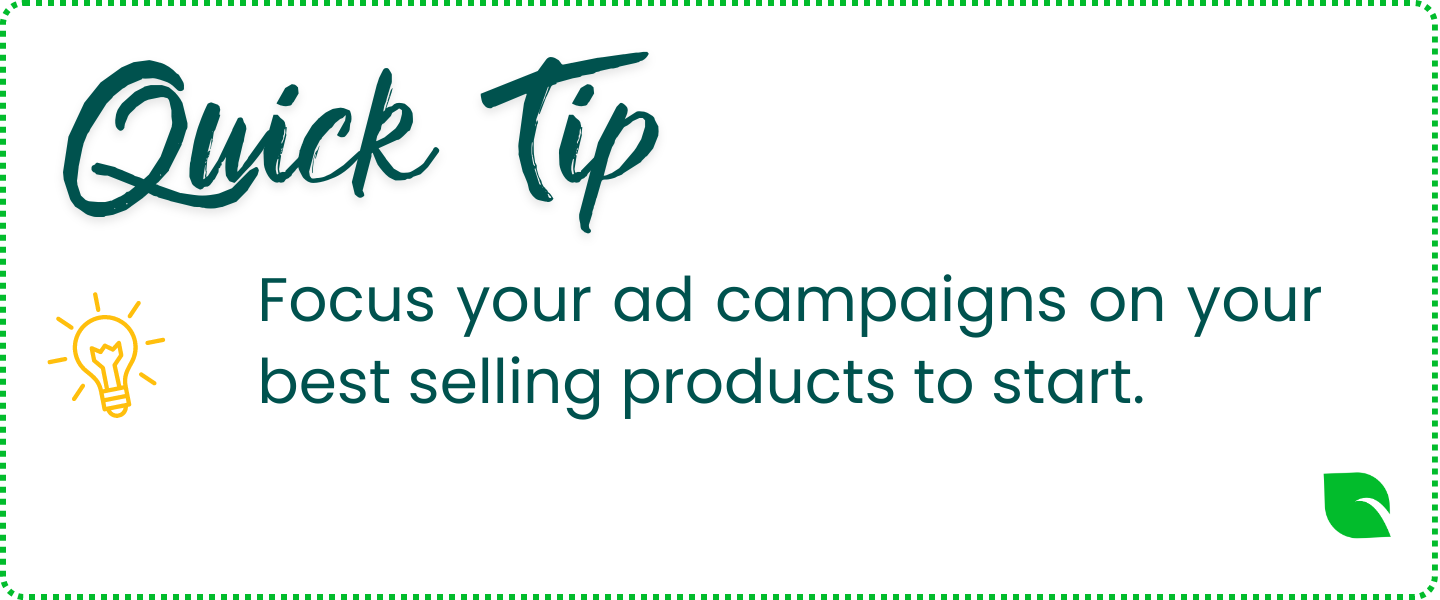
Your Lowe’s advertising strategy starts with your top-selling products. Why choose the ones that are already selling well? You’re more likely to invest a little more if you have an idea of the return you’re going to yield.
If your budget is smaller than the number of products you’re promoting, you’ll drive little traffic to your products, and they won’t get enough traction to be successful.
So, start with your best-selling products, and as you see better efficiency in your campaigns, start increasing your products and your budget to continue testing.
Creating and Optimizing Your Product Listings
Placing your products in front of the right people is only half of the advertising battle. Next is making sure your product page is retail-ready.
Your product listing needs more than a good title and some nice images to drive orders. It should include a strong product description, features, and customer reviews. Provide as much detail as you can so the potential customer feels like they have all their questions answered in one place. (That way, they’re less likely to take their business elsewhere!)
Ensure your product title is optimized by including the specific search query someone would use to find a similar product. For instance, if you sell vacuums and your top-selling vacuum is the Dust Master 7000, include the product’s name and add terms that people might be looking for when searching for a vacuum cleaner.
Example search terms (queries) may be: “Hardwood floor vacuum cleaner,” “Carpet vacuum cleaner” “Cordless vacuum,” etc.
How to Optimize Your Advertising Campaign
Just like you optimize your product listings, you’ll need to optimize your Lowe’s advertising campaign as a whole. The first thing you want your campaign to achieve is relevance—you waste ad dollars when your ads don’t appear in the right places.
If you’re new to managing your own advertising campaign, your strategy might be to upload everything into one single campaign and input all of your keywords there. That strategy won’t work if you’re selling more than one type of product, or the same product for two different uses.
So, let’s walk through the steps of creating a Lowe’s advertising strategy that will work.
Structuring Your Campaign
Separate your campaign by product type. If you sell doors and you only have “door” as your keyword, you won’t be relevant to people looking for a specific type of door. For example, your customers might be searching for exterior or interior doors, wood or fiberglass doors, front or back doors.
Structuring your campaign by the door type will make your ads more relevant for audiences looking for those specifics. Following this same example, make sure you segment your campaigns by door type, type of door material, door use type, etc. Using specific keywords to capture the attention of someone trying to buy a specific type of door will increase your chances of making a sale.
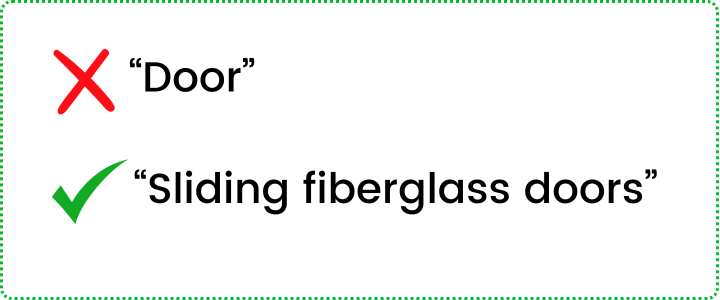
Choosing Keywords
To choose the best keywords, you need to learn your audience. What is your target customer searching for? What might they type into a search bar to find it?
When our team starts a new advertising campaign, we always start with keyword research. This involves diving into Google and Amazon metrics to understand people’s most popular queries to find specific products.
Separate your keywords by product-related keywords and brand-related keywords.
Product Keywords
Product Keywords are more general keywords that a customer will use to find a specific product without thinking about a specific manufacturer. Back to the door company example, you might want to include keywords related to “wooden back doors,” or “steel front doors.”
Branded Keywords
Branded keywords are specific keywords that a customer might use when looking for a product from a specific manufacturer. The door may choose keywords like “Masonite back doors,” or “Dekko interior doors.”
Make sure you include the plural and singular of the product you are selling, as well as any common misspelling mistakes with your keywords.
Negative Keywords
Don’t forget to add negative keywords to your campaign. Negative keywords are a list of keywords you want to avoid your ads popping up for. Think of them like a filtering system.
Following the same door company example, if you only sell wooden doors, you want to add negative keywords for all material types other than wood. “Glass doors” would be a good example of a negative keyword.
Adding negative keywords ensures that your ads are more relevant to the people looking for them. This helps optimize your ad spend because you’re not wasting money on showing ads to people who aren’t looking for your product and likely won’t
How to Place Strategic Bids
Now that you’ve set up and optimized your Lowe’s advertising campaigns, it’s time to place your bids. Once again, we’re starting off with keywords.
Keywords aren’t just important for your product listings and campaign structure; they also play a role in your bidding strategy. You have to bid on the right keywords to increase product orders.
When starting out, place bids $0.50 higher than the minimum suggested bid. If you don’t see any impressions or receive low clicks, increase the bid by another $0.50, and keep at it until you start seeing a steady amount of traffic.
Your keywords should drive more than 10 clicks daily to capture good advertising campaign data. This will help you optimize faster and get quicker results.
Bidding Strategies
To help reach your goals, One Roof Media Network offers three different bidding strategies you can take advantage of depending on the goals you have for your campaigns.
- ROAS bidding strategy: This bidding strategy automatically tweaks bids for Lowe’s to reach your target ROAS. Keep in mind that aiming for a lower ROAS will lead to less traffic as the algorithm adjusts product bids to meet your goal.
- Maximize conversions bidding strategy: This bidding strategy aims to maximize orders generated from your ads. Lowe’s will raise your bids to position your ads in front of profiles with higher purchase potential. While this strategy enhances ad visibility, it doesn’t ensure that your conversions will align precisely with your target CPA or ROAS.
- Maximize impressions bidding strategy: This strategy aims to get your ad in front of a wider audience while staying within your budget. It’s a great strategy for branding goals, putting your ads in front of more potential customers who may not be ready to buy right now, but may remember your ad when it is time for them to purchase.
A/B Ad Testing
A/B testing involves adding two versions of a product simultaneously to get a better idea of what is driving better results. It’s best to include different images, copy, and call-to-action to see what works and what doesn’t. After a few weeks of testing, pause the lower-performing ad and create a new ad to compete with the top-performing ad you already have.
How to Measure the Success of Your Lowe’s Advertising Strategy
It’s hard to know how to adjust your advertising campaign if you don’t understand all of the metrics. You need to analyze and act upon the data you see within One Roof Media Network, including the integrated dashboard, the product report, and the keyword report.
At Search Nurture, we use Lowe’s dashboards and proprietary reporting to provide a big picture, understand opportunities, and determine what is efficient. The goal is to remove spending on underperforming products, keywords, and ads and reallocate that spend to yield better returns.
Below are a few of Lowe’s advertising best practices that you can follow to increase your success:
- If you’re not seeing impressions or clicks: Increase your bids by $0.50 until you see traffic in your keywords.
- If you’re seeing impressions but low clicks: Add more negative keywords, because right now your ads are not showing up to the right customers.
- If you are seeing low ROAS: Make sure you’ve allocated a sufficient budget to all products in your campaign. Products with low traffic will need to be removed. Adding negative keywords will also help to focus your products on specific search queries. If you’ve done this and you see products with ROAS lower than one, remove them from your campaign.
- If you’re still not seeing high order volume: If, even after optimizing your campaign, you’re not seeing an increase in order volume, it’s time to increase your budget.
Getting Started With Lowe’s Advertising
Advertising on the One Roof Media Network is one of the best tools for reaching DIYers and home improvement professionals. But, you need to prioritize ad relevance to develop a winning Lowe’s advertising strategy. This can only be achieved by analyzing your data and making informed decisions to optimize your campaigns and improve your spending.
If you couldn’t tell by now, developing a strong advertising campaign isn’t just a financial investment; it takes time. You’ll need time to learn the ins and outs of using the platform, finding keywords, optimizing your listings, and analyzing your metrics.
Sound like a lot of work? It definitely can be. If you need help developing your Lowe’s advertising strategy or want someone to run your campaign for you, I’m here to help. The retail media team at Search Nurture knows Lowe’s advertising well and we’ve had a lot of success with it.
So give us a call and tell us your Lowe’s advertising campaign goals. We’ll do all we can to make sure you achieve them.
Lowe’s Advertising FAQ
- What is Lowe’s One Roof Media Network?
- Lowe’s One Roof Media Network is an advertising platform with more than 200 clients across a variety of home improvement and lifestyle categories. It’s a way for independent brands to advertise their products on Lowe’s website, mobile app, and other mediums.
- Why should you advertise with Lowe’s One Roof Media Network?
- Lowe’s One Roof Media Network provides a wide selection of creative advertising solutions and marketing services that make it easier for you to bring your products to the retailer’s loyal customers. The platform also gives you customer data to better tweak your campaigns across other advertising platforms.
- Why should you work with a Lowe’s Advertising agency?
- Search Nurture is the only advertising agency that specializes in the Lowe’s advertising platform. We take the time to thoroughly analyze your advertising data to optimize product listing ads and banner campaigns and eliminate the guesswork of bid changes. Our campaign organization allows us to drive traffic to the most relevant category targets. Plus, we watch out for potential changes and updates around the clock, so you don’t have to.





